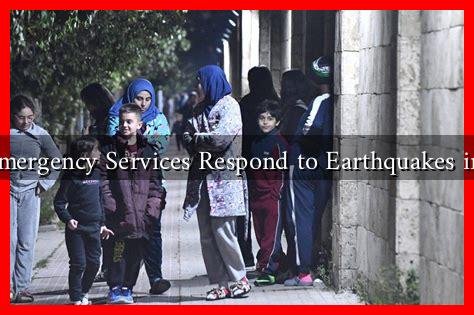-
Table of Contents
How Do Emergency Services Respond to Earthquakes in Lebanon?
Lebanon, a country situated on the complex tectonic boundary between the Arabian and Eurasian plates, is no stranger to seismic activity. The potential for earthquakes poses significant risks to its population and infrastructure. Understanding how emergency services respond to these natural disasters is crucial for enhancing preparedness and resilience. This article explores the mechanisms, challenges, and strategies employed by emergency services in Lebanon when responding to earthquakes.
The Seismic Landscape of Lebanon
Lebanon is located in a seismically active region, with historical records indicating several significant earthquakes. The most notable include:
- The 551 AD earthquake, which devastated the city of Baalbek.
- The 1202 AD earthquake that caused extensive damage in Tripoli.
- The 1999 earthquake in the northern region, which resulted in casualties and property damage.
According to the Lebanese National Center for Geophysics, the country experiences minor tremors regularly, with larger earthquakes occurring approximately every 100 years.
. This reality necessitates a robust emergency response framework.
Emergency Services Structure in Lebanon
The primary agencies involved in earthquake response in Lebanon include:
- The Lebanese Civil Defense: This agency is responsible for search and rescue operations, firefighting, and providing emergency medical services.
- The Lebanese Army: The military plays a crucial role in disaster response, offering logistical support and manpower during emergencies.
- Non-Governmental Organizations (NGOs): Various NGOs, such as the Lebanese Red Cross, provide medical assistance, shelter, and food distribution.
These agencies work in coordination with international organizations, such as the United Nations and the World Health Organization, to enhance their capabilities and resources.
Preparedness and Training
Preparedness is a cornerstone of effective emergency response. In Lebanon, several initiatives aim to equip emergency services with the necessary skills and knowledge:
- Training Programs: Regular training sessions are conducted for emergency responders, focusing on search and rescue techniques, first aid, and disaster management.
- Public Awareness Campaigns: The government and NGOs run campaigns to educate the public about earthquake preparedness, including creating emergency kits and developing family communication plans.
- Simulations and Drills: Periodic earthquake drills are organized to test the readiness of emergency services and the public’s response to seismic events.
Response Mechanisms During an Earthquake
When an earthquake strikes, the response mechanism is activated through a series of well-defined steps:
- Immediate Assessment: Emergency services conduct rapid assessments to determine the extent of damage and prioritize areas needing urgent assistance.
- Search and Rescue Operations: Teams are deployed to locate and rescue trapped individuals, often using specialized equipment and trained dogs.
- Medical Assistance: Field hospitals are set up to provide immediate medical care to the injured, while ambulances transport critical cases to established medical facilities.
- Coordination with Local Authorities: Emergency services work closely with local governments to ensure a unified response and resource allocation.
Challenges Faced by Emergency Services
Despite the structured response framework, several challenges hinder effective earthquake response in Lebanon:
- Infrastructure Limitations: Many buildings in Lebanon do not adhere to modern seismic codes, increasing vulnerability during earthquakes.
- Resource Constraints: Limited funding and resources can impede the ability of emergency services to respond effectively.
- Political Instability: Ongoing political tensions can disrupt coordination among agencies and hinder timely responses.
Case Study: The 2006 Lebanon War
The 2006 Lebanon War serves as a poignant example of the challenges faced by emergency services during crises. Although not an earthquake, the conflict resulted in significant destruction and displacement, testing the capabilities of emergency responders. The Lebanese Red Cross and Civil Defense played vital roles in providing medical care and shelter to those affected, highlighting the importance of preparedness and coordination in any disaster scenario.
Conclusion
Lebanon’s geographical location makes it susceptible to earthquakes, necessitating a well-coordinated response from emergency services. Through training, public awareness, and collaboration with international organizations, Lebanon strives to enhance its preparedness for seismic events. However, challenges such as infrastructure limitations and resource constraints remain significant hurdles. By addressing these issues and continuing to invest in emergency response capabilities, Lebanon can improve its resilience against future earthquakes, ultimately safeguarding its population and infrastructure.
For more information on earthquake preparedness and response strategies, you can visit the United Nations Disaster Risk Reduction page.





